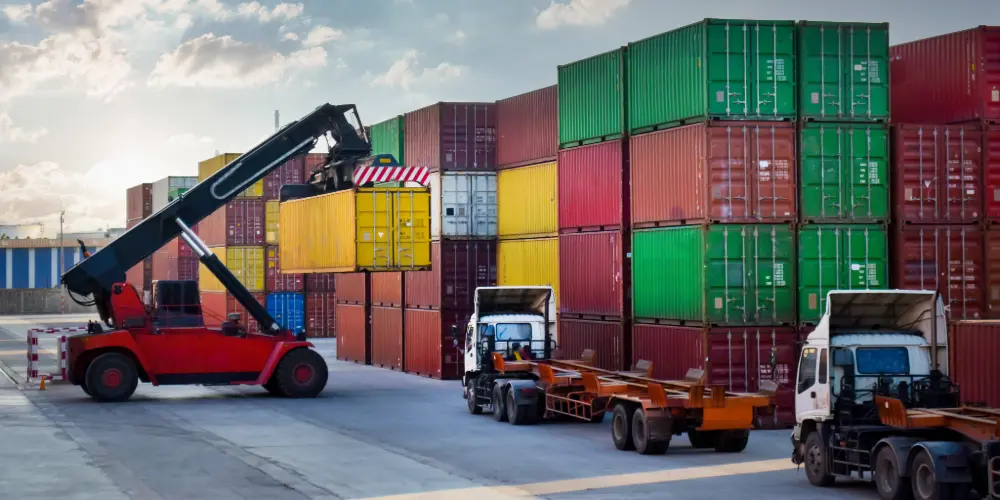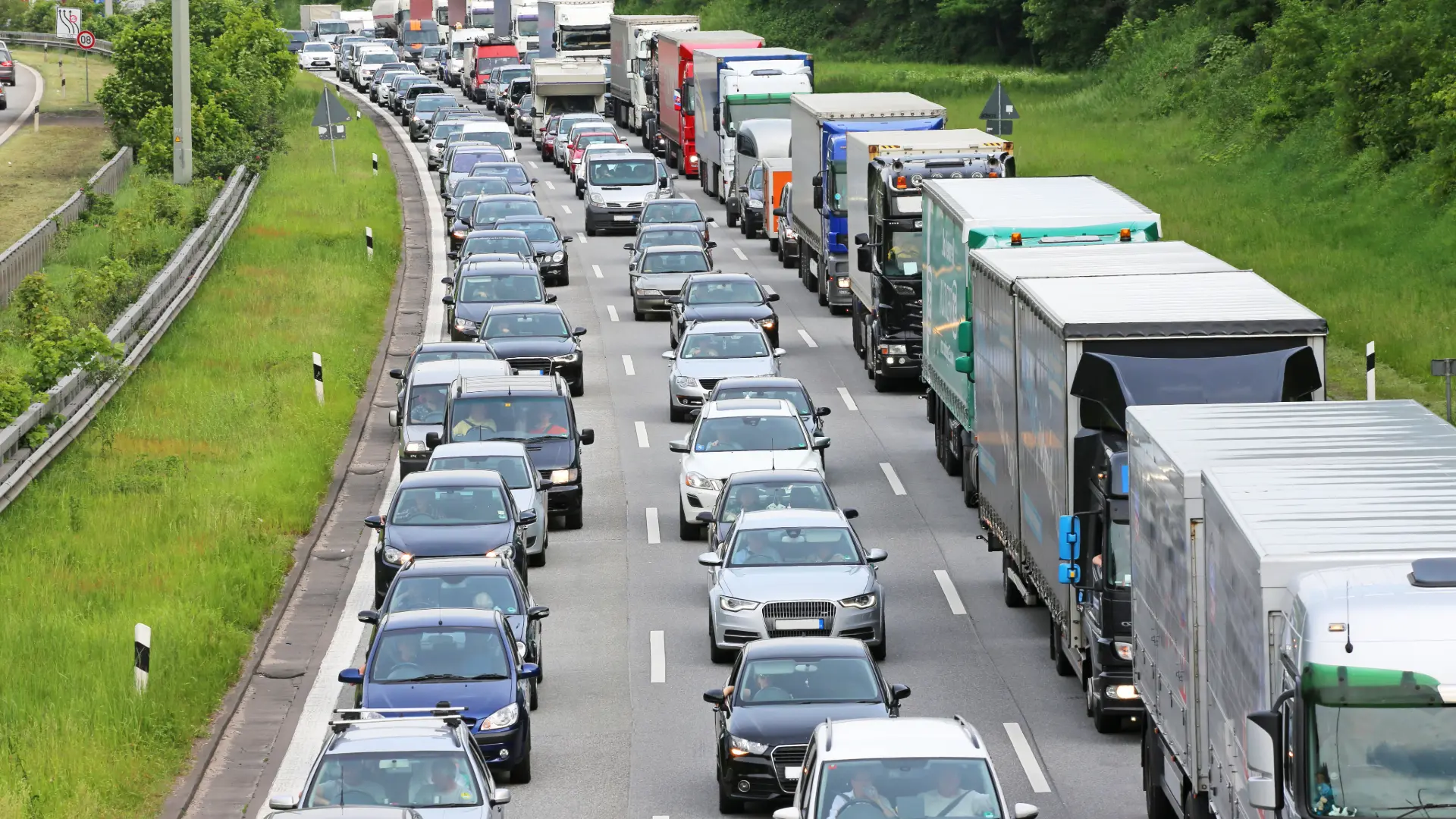Fuel costs are one of the largest expenses for haulage companies, especially for those running medium to large fleets. Whether you operate HGVs or vans, fuel consumption can significantly impact your bottom line. The good news is that with some simple steps and advanced strategies, you can reduce your fleet’s fuel consumption down and make your business more efficient.
In this guide, we’ll cover easy and more advanced methods to help you cut your fleet’s fuel consumption and lower your costs. We’ll also look at how tools like telematics and platforms such as Haulage Exchange (HX) can play a role in improving efficiency and cutting fuel use.
What we’ll cover
Easy ways to reduce your fleet’s fuel consumption
Reducing fuel consumption doesn’t always require expensive upgrades or complicated strategies. In fact, some of the most effective methods are simple steps that can be implemented almost immediately.
Here are some easy ways to start cutting down on fuel use.
1. Regular vehicle maintenance
Keeping your vehicles in top condition is one of the easiest ways to reduce fuel consumption. A well-maintained vehicle runs more efficiently, while neglected maintenance can lead to higher fuel use.
For example, under-inflated tyres can increase rolling resistance, making your vehicles work harder and burn more fuel. Simply checking and maintaining proper tyre pressure can make a noticeable difference in your fleet’s fuel consumption.
Regular servicing is just as important. Changing air filters, oil, and other essential components ensures that your vehicles run smoothly and efficiently. Even small issues like worn-out spark plugs can lead to unnecessary fuel consumption.
Scheduling regular vehicle inspections will help you reduce your fleet’s fuel consumption and extend its lifespan.
2. Driver training for fuel-efficient driving
Another simple way to cut fuel costs is by training your drivers to adopt fuel-efficient driving techniques. HGV driver training that focuses on eco-friendly driving can significantly reduce fuel consumption.
Small changes in driving habits can have a big impact on reducing diesel consumption. Encourage your drivers to maintain steady speeds, accelerate smoothly, and avoid unnecessary braking.
Another important technique is avoiding idling. Many drivers may leave their HGVs and courier vans idling during deliveries or rest breaks, which wastes fuel. Train your drivers to turn off their engines during long stops, as even a few minutes of idling can consume more fuel than restarting the engine.
By focusing on these basic driving techniques, you’ll quickly see a reduction in your fuel bills.
3. Reducing vehicle idling time
Idling is one of the biggest contributors to unnecessary fuel consumption. Many haulage vehicles spend a significant amount of time idling—whether it’s during loading and unloading, in traffic, or while waiting for a job. This wasted fuel adds up quickly across a fleet.
Using telematics can help monitor and reduce idling time across your fleet. Telematics systems allow you to track how long vehicles sit idling, giving you real-time insights into where fuel is being wasted.
By setting clear targets for reducing idle time and providing drivers with feedback, you can minimise this waste and bring your fleet’s fuel consumption down.

Advanced methods to reduce your fleet’s fuel consumption
While the easy methods can make a difference, more advanced strategies will help you achieve even greater fuel savings.
These methods may involve investing in new technologies or making larger operational changes, but the long-term benefits can be substantial.
1. Using telematics to optimise routes and monitor fuel use
Telematics plays a key role in reducing fuel consumption by providing real-time data on how your vehicles are performing. With telematics, you can track fuel use, driving behaviour, and vehicle efficiency. This data helps you identify areas where improvements can be made, whether it’s cutting down on idling or finding more efficient routes for your drivers.
One of the biggest benefits of telematics integration is its ability to help optimise your fleet’s routes. By analysing data from your fleet’s journeys, you can identify more fuel-efficient routes that reduce the time spent on the road and the amount of fuel used. Avoiding congested areas, adjusting routes based on real-time traffic data, and planning the most direct journeys can significantly reduce fuel consumption.
Telematics also helps monitor driver behaviour in real-time. It can alert you when drivers are speeding, idling excessively, or driving inefficiently, helping you improve safety and reduce fuel use. Integrating it with carrier management software can further optimise your fleet’s performance. By using this data, you can provide feedback and training to drivers, helping them adopt better habits that reduce fuel use.
Over time, these improvements can lead to major savings across your entire fleet.
2. Streamlining fleet operations with return loads
One of the most effective ways to reduce diesel consumption is by streamlining fleet operations and cutting down on empty miles. Many haulage companies struggle with vehicles returning empty after delivering a load, which wastes both time and fuel. Empty return journeys are a major source of unnecessary fuel consumption, but they can be minimised with better planning and the right tools.
This is where Haulage Exchange (HX) comes in. HX connects haulage companies with available loads, helping to fill return journeys and eliminate wasted trips. By using HX, you can maximise your fleet’s efficiency, making sure your vehicles are always carrying a load whenever they’re on the road.
For example, when one of your vehicles completes a delivery and needs to return to base, HX allows you to find return haulage loads along the route. This way, your vehicles are fully utilised, and you avoid the costly problem of driving empty. The more you can fill your return journeys, the more you’ll be able to cut fuel consumption and reduce overall costs.
Using HX also helps with route optimisation. When you can find return loads, you can plan your journeys more efficiently, reducing the number of empty miles and unnecessary detours. Leveraging TMS integrations further enhances these efficiencies. This not only helps reduce fuel consumption but also boosts overall productivity, as your vehicles spend more time moving freight and less time on the road empty.
Additionally, Haulage Exchange offers data insights that help your day-to-day fleet management operations. You can track fuel usage, driver performance, and route efficiency, allowing you to make informed decisions that further reduce your fleet’s fuel consumption. By using platforms like HX, you’ll be able to bring your fuel consumption down while improving operational efficiency across your fleet.
3. Upgrading to more fuel-efficient vehicles
Another advanced method to reduce fuel consumption is upgrading your fleet to more fuel-efficient vehicles. While this requires a larger upfront investment, the long-term savings on fuel costs can be substantial. Newer HGV models are designed with fuel efficiency in mind, offering improved aerodynamics, better engines, and lighter materials that all contribute to lower fuel consumption.
The shift toward sustainable fuels is also becoming a key consideration for hauliers. Hybrid and electric vehicles are gaining popularity, especially in urban deliveries and short-haul routes. As the infrastructure for sustainable fuels like electric and hydrogen expands, investing in these technologies can significantly reduce your fleet’s fuel consumption and carbon footprint.
Achieving FORS accreditation can further showcase your commitment to sustainability, as the certification recognises companies that prioritise efficiency and environmental responsibility.
For those not ready to switch to electric or hybrid vehicles, upgrading to newer diesel models still offers benefits. Modern diesel engines are more efficient than older models, consuming less fuel and emitting fewer emissions. Investing in these fuel-efficient vehicles can provide immediate savings, while also positioning your company for a more sustainable future.
Conclusion
Reducing your fleet’s fuel consumption is good for your bottom line and the environment. Simple steps like regular maintenance, driver training, and reducing idle time can help you start cutting fuel costs right away. For greater savings, advanced methods like telematics, optimising routes, and using platforms like Haulage Exchange can make a big difference, especially when considering seasonal demand fluctuations.
Streamlining your fleet operations, finding return loads, and upgrading to more efficient vehicles will help bring your fuel consumption down further. Platforms like HX also help reduce empty miles, making your operations more efficient. Whether you operate a fleet of HGVs or a mix of vans and trucks, these strategies will help you become more efficient, reduce diesel consumption, and improve your profitability.




